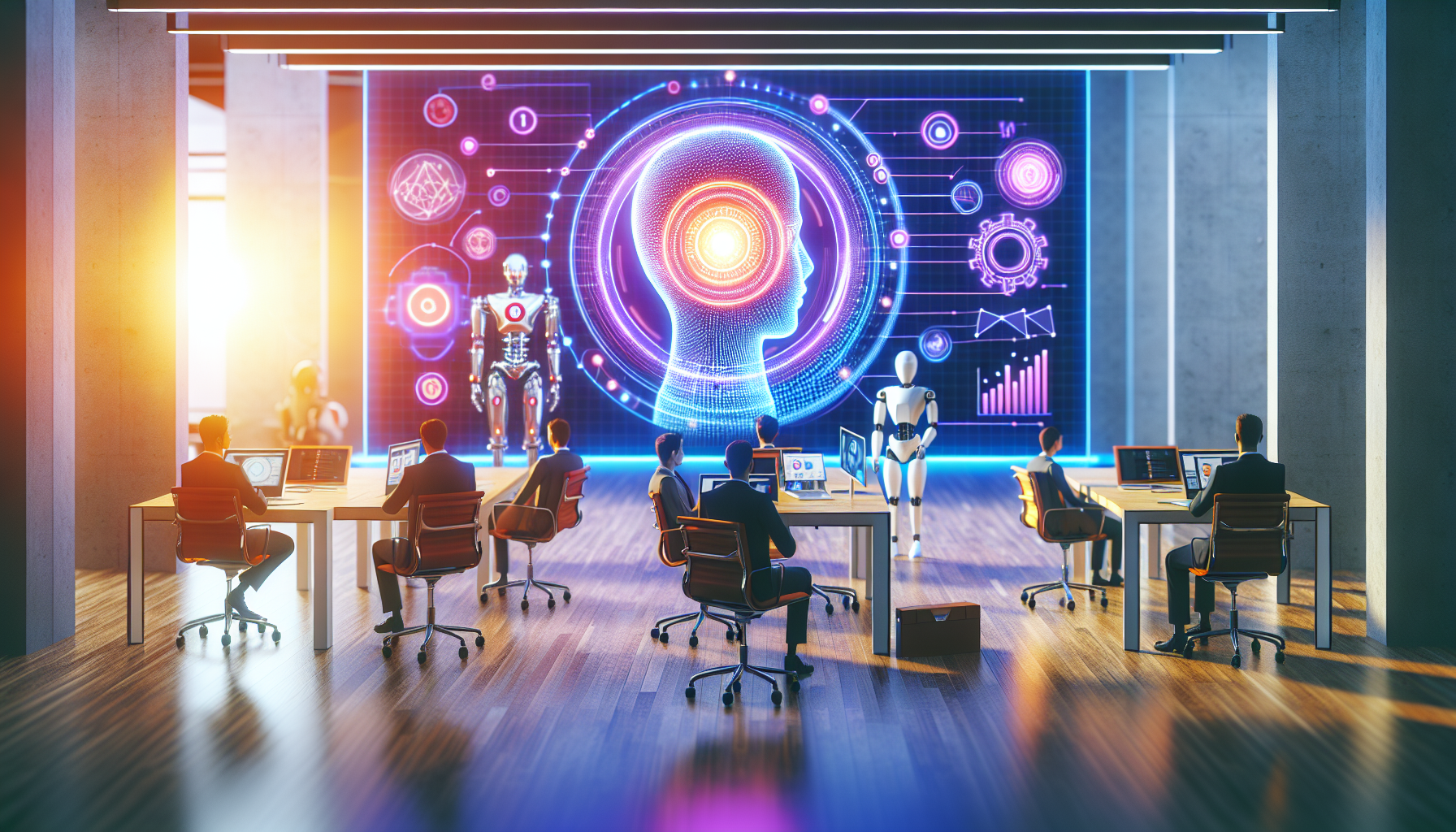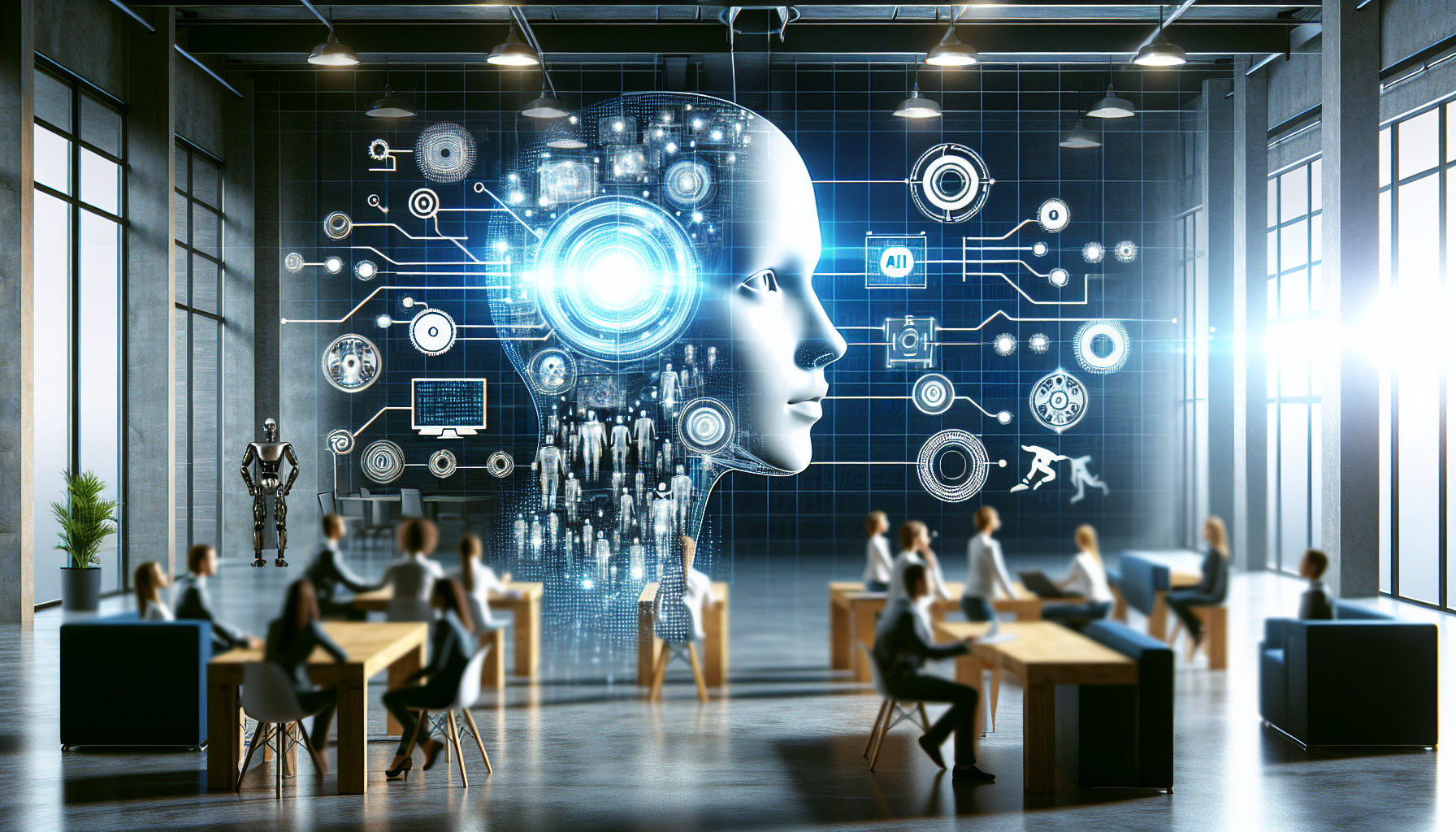
AI and Artistry: The Creative Revolution Through Artificial Intelligence
March 22, 2025
Imagine a world where artificial intelligence and human creativity collaborate, producing masterpieces that redefine the boundaries of art. This is not a distant future but a vibrant reality unfolding around us. The intersection of AI and art is a dynamic space where technology complements human ingenuity, leading to groundbreaking works that inspire and provoke thought. Through the lens of a captivating case study, we explore how AI is not merely a tool but a partner in the artistic process, reshaping how we perceive creativity itself.
In a bustling studio filled with canvases, computers, and a myriad of colors, a unique creative force is at play. Here, AI algorithms are not hidden in the background but are active participants in the creation of art. The artist, let's call her Emma, is renowned for her innovative approach to integrating AI into her artistic practice. Rather than viewing AI as a competitor, Emma embraces it as a collaborator, engaging in a dialogue that challenges traditional notions of authorship and originality.
Emma's journey into AI-driven artistry began with a simple question: How can machines enhance, rather than detract from, the human creative process? Her curiosity led her to explore generative adversarial networks (GANs), a type of AI that learns to create by mimicking human-like patterns. By feeding the AI a vast collection of art styles, Emma taught it to understand and replicate the nuances of various artistic expressions.
The breakthrough came when Emma decided to take a bold step — she allowed the AI to propose its own ideas. It was a daring move, surrendering control to a machine, but the results were astonishing. The AI began generating unique compositions that Emma describes as "surprisingly evocative," capturing emotions and themes in ways she had never imagined. The machine was not just replicating; it was creating.
One of her most celebrated projects involved a series of portraits where the AI suggested fantastical elements, blending human features with abstract forms. The collaboration highlighted the unpredictability of creativity when guided by both human emotions and algorithmic logic. Each piece was a testament to the synergy between Emma's vision and the AI's computational prowess, resulting in art that was both familiar and refreshingly novel.
Critics and art enthusiasts were captivated by the series, not just for its aesthetic appeal but for the questions it raised about the nature of creativity. Can a machine be truly creative, or is it merely a reflection of its programming? Emma argues that the process is less about the machine's creativity and more about the dialogue it facilitates. The AI serves as a catalyst, pushing her to explore new territories and reconsider her artistic boundaries.
Emma's work has inspired a growing community of artists who see AI as an ally in the creative process. These artists are not confined to traditional mediums; they venture into digital landscapes, virtual realities, and interactive installations, each project a testament to the boundless possibilities of AI-assisted art. The collaborative nature of this movement is reshaping the art world, making it more inclusive and expansive.
This case study is not an isolated phenomenon. Around the globe, AI is influencing art in myriad ways, from music composition and dance choreography to literature and architecture. Each field witnesses unique collaborations, where AI's analytical capabilities complement human intuition and emotional depth. The resulting creations are a blend of logic and imagination, science and art, each piece a dialogue between binary code and the human soul.
As we stand on the brink of this creative revolution, one cannot help but ponder the future of art in an AI-enhanced world. Will the lines between human and machine creativity blur, or will they remain distinct? Can we harness this technology to democratize art, making it accessible to all, or will it remain a niche pursuit for the technologically savvy?
The answers to these questions lie in the hands of artists like Emma, who dare to dream and experiment at the intersection of technology and creativity. Their work challenges us to rethink our definitions of art and creativity, inviting us to consider the infinite possibilities that arise when humans and machines collaborate in harmony. As we explore this new frontier, we are reminded that creativity is not a static trait but a dynamic force, ever-evolving, and endlessly inspiring.


